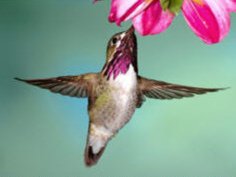Calling all hummingbird enthusiast! Here is a question that you may or may not already be able to answer. What species of hummingbird regularly spends all year in the United States? If you are not sure of the answer to this question, do not worry because this post will provide you with the answer to that question and much more information on this particular species of hummingbird.
According to an issue of Birds and Blooms magazine, the answer to the question is the Anna’s Hummingbird. When most other species of hummingbirds are headed to the tropics, Anna’s Hummingbirds are preparing to nest along the west coast. This species is the most common species of hummingbird to be found in southern California.
The Anna’s Hummingbird was originally only found on the Pacific slope from Baja California to San Francisco. In recent years, this bird has increased its population and expanded its breeding range in recent years to Vancouver, British Colombia, east to southern Arizona. The reasons for this include the following: the introduction of exotic flowering plants, especially Eucalyptus, red-hot-poker and tree tobacco,and also due to the increased proliferation of hummingbird feeders.
This particular species of hummingbird enjoys the use of a bird bath. On hot summer days, it is quite common for this species of hummingbird to get a drink from the bird bath. They are known to especially like bird baths that drip because this allows the bird to hover and sip the water as it runs over the edge.
Anna’s Hummingbirds have an unusually early breeding season, which runs from December and lasts until May or June. The males arrive first and begin defending territories associated with rich and dependable food sources. The females arrive a few weeks later and establish separate territories. The females then build lichen-camouflaged nests of made from plant down and spider webs. When the nest is partially built, the male performs his courtship display. First, he hovers before the female, then rises high, sometimes pausing to sing a thin, squeaky warble of a song before again diving toward her, tracing a deep arc and making a loud, explosive noise at the bottom of the dive. Incubation of the eggs takes about two weeks before the naked and blind nestlings hatch. After another three weeks, the young may leave the nest, although they remain dependent upon the mother for food for a few days. Juveniles rapidly develop territorial behavior, sometimes establishing their own feeding territories shortly after leaving the nests.
